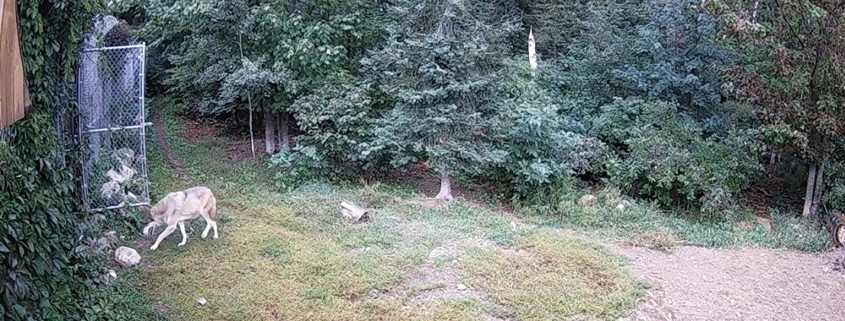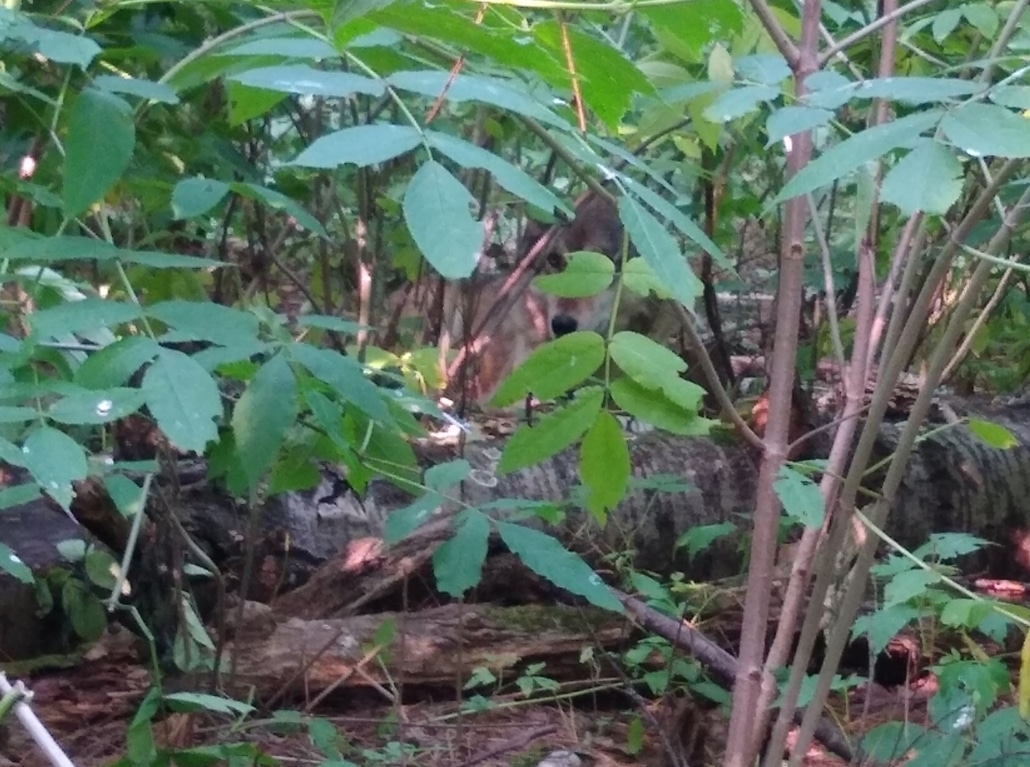15 September 2020
As we have previously posted, we tried some non-invasive treatments in hoping to find some improvement for Boltz before we put him through a much riskier procedure of immobilization and transport to the vet clinic.
We had two goals: The first was to find him some relief and improvement in mobility and the second was to get him to feel comfortable going into a more confined space for the potential need for immobilization and further diagnostic work.
In hopes of giving him a less intimidating access to the Pack Holding area, we opened a four-foot by seven-foot gate. While there is a chute with an overhead gate, wolves seem to have an avoidance of things overhead, particularly Boltz, with his phobias of flying insects.
On Saturday, he came down to the front of the enclosure four times, even going through the gate of the Pack Holding area, but not far enough for staff to close the door without startling him and negatively conditioning him to the space.
Boltz was eagerly taking his meds each morning from Sept. 9 to Sept. 13, with a good amount of meat to keep his energy levels up.
Staff monitored his pattern of movement over the weekend and felt there was not enough improvement after the first five days of the steroid treatment. The vet was on site Monday to implement the next stage of treatment including immobilization, bloodwork, an MRI and x-rays. This is much more risky in the wooded area of the enclosure where Boltz has chosen to stay.
Wolves, by nature, are fear-avoidant and that tends to be magnified when they are not feeling well.





